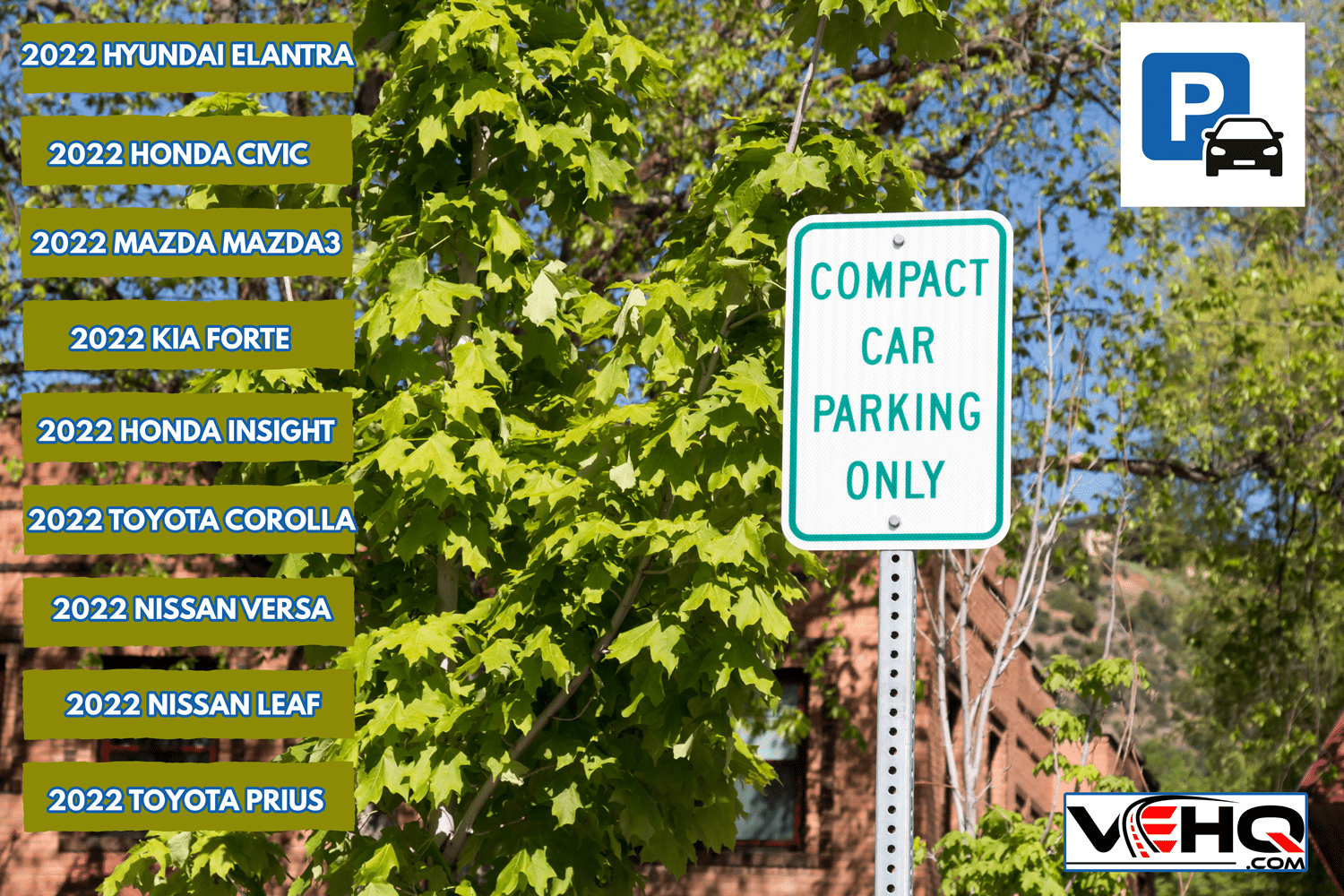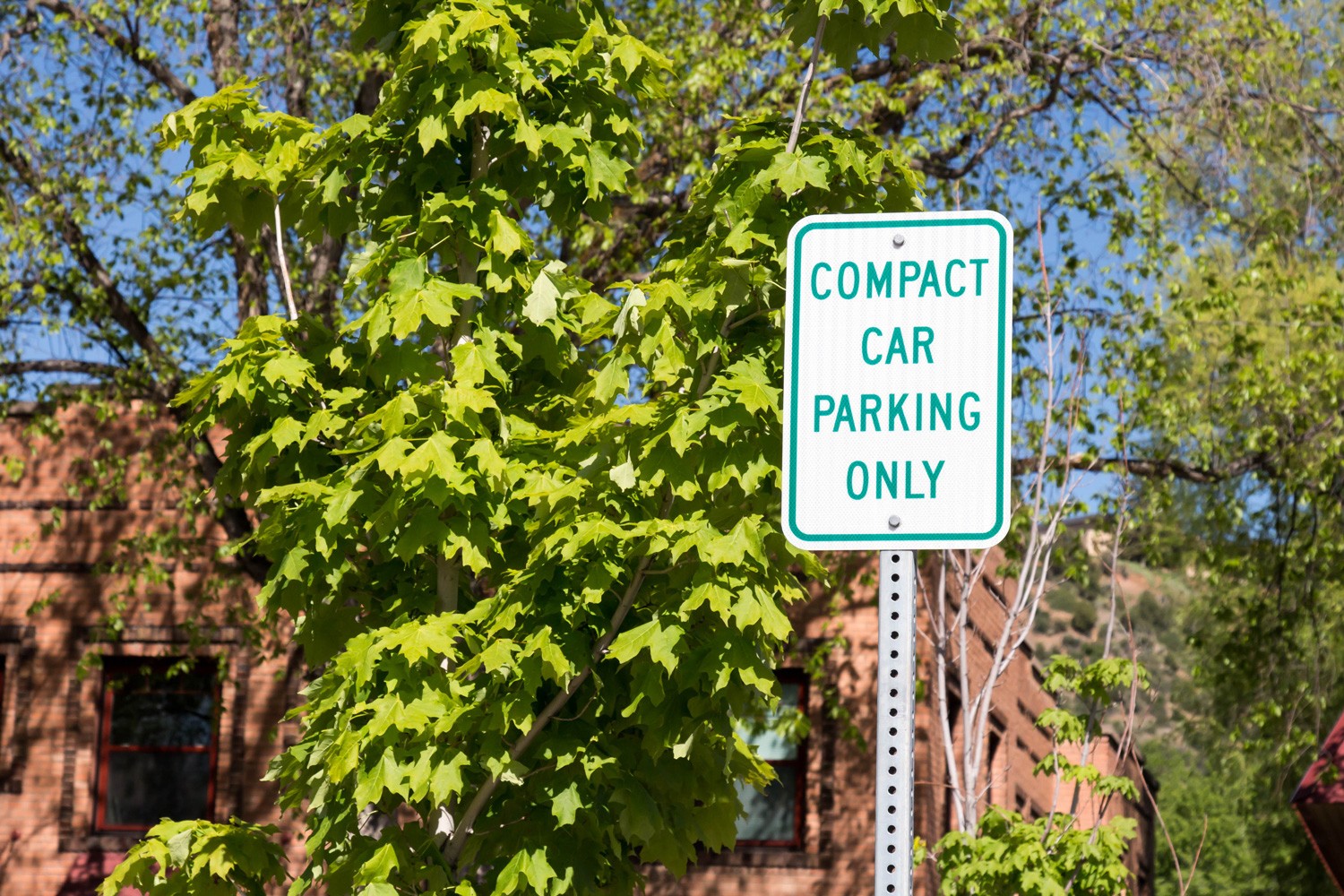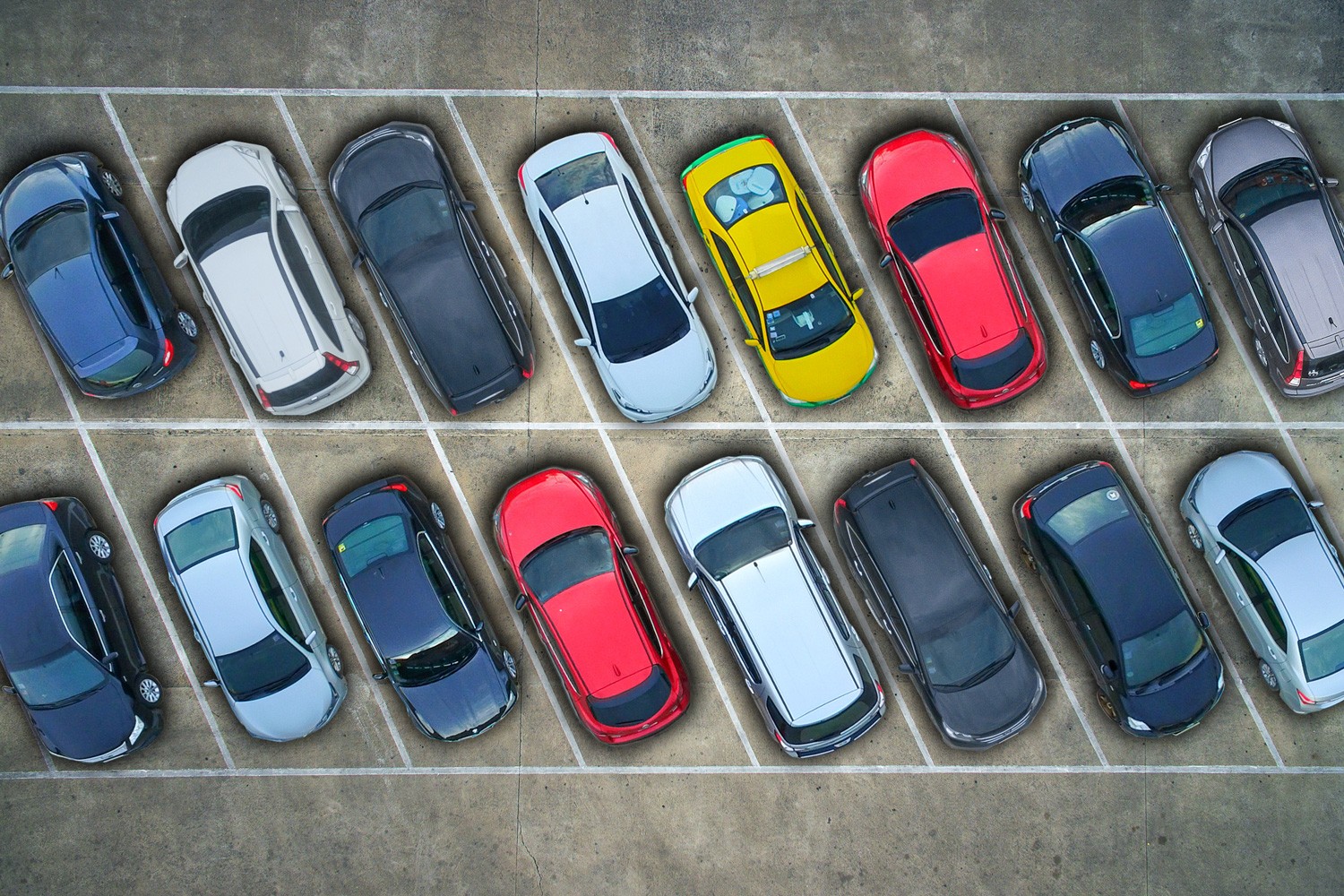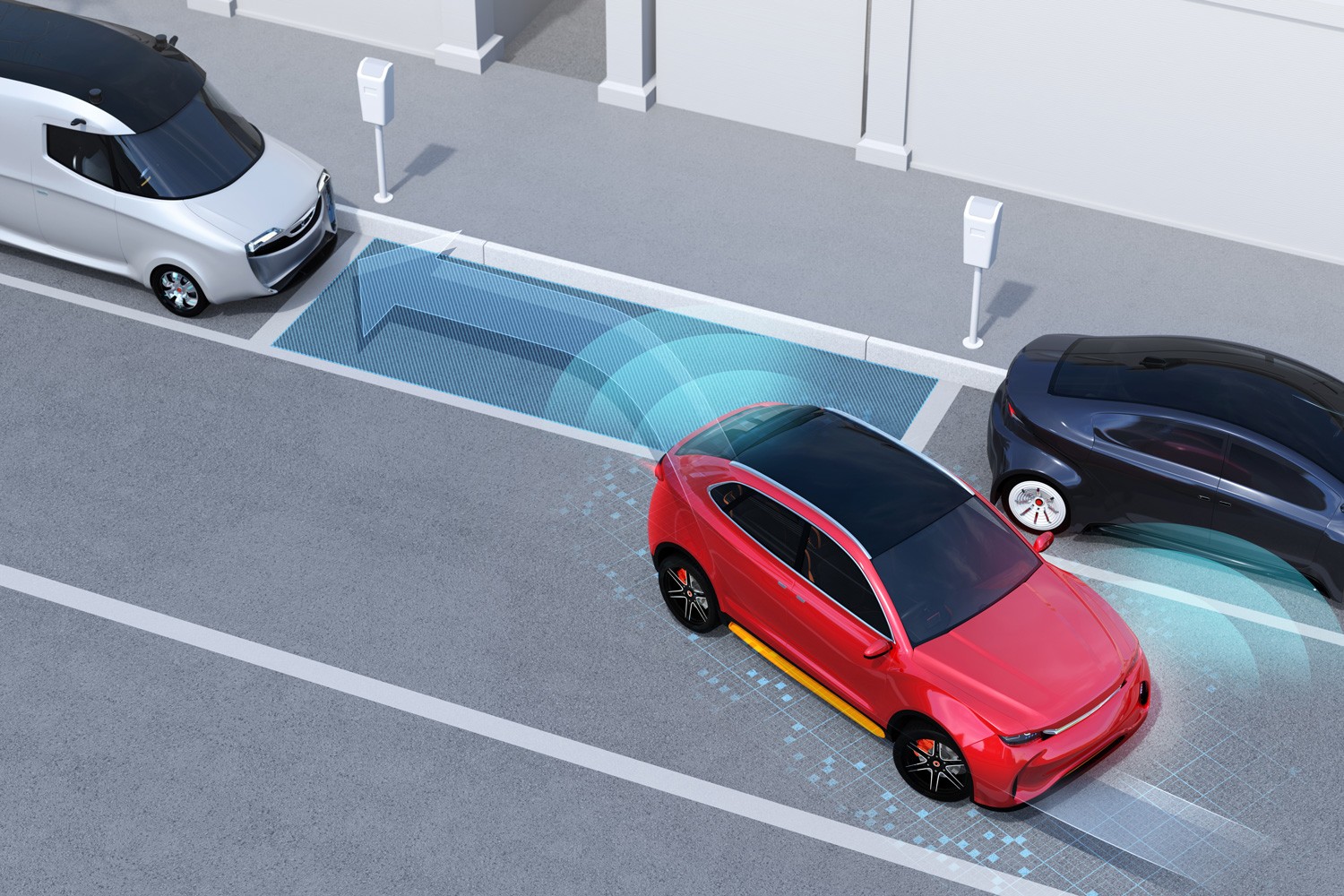You've probably noticed a sign over spaces in a public parking lot or garage that reads, "Compact Car Parking Only." If you wonder what cars can park in these spaces, we can help. We researched several professional sources, so you'll know if you can park your vehicle in one.
Only a compact car or sub-compact should park inside of a compact car parking space. The space is too narrow and too short for a full-sized vehicle to safely park. This includes vehicles that are less than 6 feet wide.
Now that we know what size of car these signs cover, we'll look at some common models by class. You might wonder how big a compact car parking space is, or question the standard size of a public parking space. For answers to these questions and more, read on.

What Compact Cars Should Fit in a Compact Car Parking Space?
It might seem that "compact car parking only" restrictions limit the number of vehicles that can park in them. But even more than this, you might be surprised to learn that there are a great number of cars (and small trucks) that fit the criteria for the space.
As we pointed out earlier in the post, compact vehicles are less than six feet wide. So, there are plenty of vehicles out there that match that specific criteria.
Here are some of the more popular compact vehicles for the model year 2022:
- 2022 Hyundai Elantra
- 2022 Honda Civic
- 2022 Mazda Mazda3
- 2022 Kia Forte
- 2022 Honda Insight
- 2022 Toyota Corolla
- 2022 Volkswagen Jetta
- 2022 Nissan Versa
- 2022 Hyundai Accent
- 2022 Nissan Leaf
- 2022 Toyota Prius
- 2022 Mini Cooper
- 2022 Chevy Spark
- 2022 Hyundai Santa Cruz (pickup truck)
Why the Width Matters?
Looks may be deceiving, but the spaces for compact cars are narrower than standard spaces. For you to get in and out of your vehicle, you will need enough room on either side of your vehicle after parking it.
If you try to cram a larger SUV or full-size car into a compact space, you might find that you are taking up the entire width of the parking spot!
You should know the width of your vehicle before you ever try to park it. This will keep you free from door dings! It will also mean an ease of entry and exit for you and your passengers.
How Big is a Compact Car Parking Space?
For a parking space to be exclusive to compact vehicles, it has to meet certain dimension requirements. While these requirements might vary from municipality to municipality, there is certainly a general standard that local governments follow.
A compact car parking space must be no less than eight feet wide. The length of the compact space must be at least 16 feet. These dimensions are the standard no matter if the parking space is at an angle or side-by-side.
Eight feet is not a lot of width for a car. When you consider that the average sedan is over 6 feet, this would leave less than 1 foot of room on either side of the vehicle after parking.
There would not be enough clearance to safely open the car doors if the sedan parks in a compact space!

What Size is a Typical Public Parking Space?
Public parking spaces for regular cars are also a standard size. Though they could vary from place to place, they are almost always nine feet wide.
They should be at least 18.5 feet long for angled and side-by-side parking. Parallel parking spaces have the same width but should be a minimum of 22 feet long.
These spaces give enough room for most passenger vehicles to park inside. That extra foot of width will help enter and exit full-size cars. They can still be a little cramped for full-size SUVs and larger pickups, however.
The length of the space is the key factor here. You have to consider, large SUVs can be as long as 18.5 feet. The biggest pickups can be a little bigger. These types of vehicles will use every inch of that length to fit safely inside.

What are the Three Types of Parking Spaces?
You probably have encountered different types of parking spaces. Whether on a public street or garage or in a private parking lot, you will surely encounter each of the following parking space styles in your driving career.
Each type is for a specific reason, like maximizing available space or visibility. All three have their pluses and minuses. Let's look at each of them, so you'll be able to understand why you see them where you do.
Angled Parking
This style of parking space will be set at acute angles to a wall, sidewalk, or street. Vehicles will pull in headfirst, in most cases. Sometimes, you might see a sign that reads "Back-in parking only" above these spaces, however.
These allow for more spaces, maximizing the number in a limited area. They have one drawback, though. Backing out of an angled parking space can be dangerous.
You will have limited visibility when leaving your space. If there is a vehicle on either side of you, it can obscure your view of oncoming traffic. Take proper precautions when exiting an angled parking space, and do so slowly.

Parallel Parking
Parallel parking is the bane of any student trying to pass their Driver's Education course. But once you get the hang of it, it's not so bad.
Modern onboard technology makes this task a lot easier, too. Backup cameras, side sensors, and even self-parking vehicles are making the complaints about parallel parking a thing of the past.
These spots will take up the most space on a street. They require a minimum length of 22 feet, which is a lot of room on a typical city block.
But parallel parking spaces work well on busy streets. These spaces are typically on narrow streets, as they take up less of the street's width.
There are risks with this type of parking as well. You can "curb check" your wheels if you aren't paying close attention. This type of parking also takes a bit more time.
Those who are new to it have been sure to frustrate a driver or two that's waiting in traffic behind them.

Perpendicular Parking
Finally, we have perpendicular parking. You will find these spaces in many public and private parking lots and garages in all parts of the world.
Commonly, this is also referred to as "side-by-side" parking. It is when the front end of the car is perpendicular to the wall, sidewalk, or parking line that is directly in front of it.
For these parking spaces to work, they are a little wider than their angled counterparts. They can be trickier to maneuver into, but are a lot easier to back out of.

Final Thoughts
You should remember to obey any posted "Compact Parking Only" signs. You cannot effectively park a full-sized vehicle inside of one, no matter how hard you try. There are standard parking space sizes for both regular and compact-only spots.
When learning to drive, it's important to know the three methods of parking a vehicle. And it's also important to know the best ways to maneuver your vehicle safely in and out of one. Always follow the rules of the road and make sure to drive safely!
We hope this post on compact cars answered all of your questions. For more helpful information, we suggest reading the following automotive posts:
Does Parking On Grass Damage Car (Or The Lawn)?
